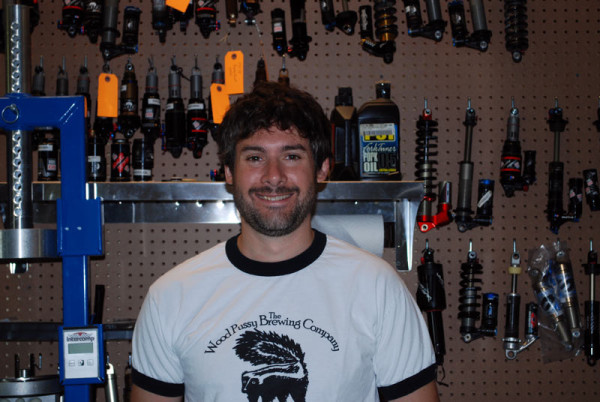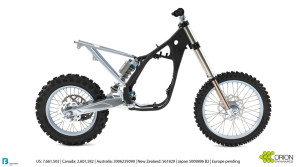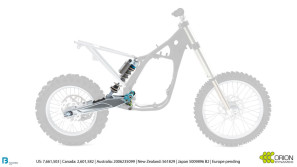Following Ibis’ recent release of the all-new Mojo HD3, which uses a fifth generation dw-link suspension design, I got to thinking: How exactly does Dave Weagle go about improving a suspension platform that’s already so well received?
So I asked him.
His answer is long because there’s so much to it, and it’s different for every bike. After all, his companies have licensed or designed suspension systems to Ibis, Pivot, Turner, Evil, BH, Devinci, Salsa and others, all of whom make very different types of mountain bikes. So we started out talking generalities before diving in to specifics, using several different bikes as examples.
Weagle’s designs go beyond the popular and more widely known dw-link and Split Pivot. He also developed the Delta System, which is owned by Evil, a brand that Weagle started with friends, then sold and now consults for. Split Pivot and dw-link are technologies he created, and are both run as separate corporations who have their own customers.
BIKERUMOR: What’s your role with the companies you design for?
WEAGLE: Sometimes it’s limited to suspension licensing, sometimes it’s consulting on geometry and sometimes I get to develop a complete bike’s geometry and suspension as a whole package. It’s not often I get to do all of it together, but it sure is fun! Of course, if everybody let me do that, everyone’s bikes would look like mini-downhill bikes! So, variety is good, because not everyone wants the same thing.
Although I license technology for each of my partner’s bikes, I really enjoy the design aspect, so one licensing requirement is that I personally develop all suspension kinematics for all of my partner’s bikes. It’s a great creative outlet, and one that I get a lot of enjoyment out of. I like to say, “No one product can be everything to everybody.” I like mocha and you might like vanilla. That only means that we are both right, and we both like ice cream. I don’t think that there is anything wrong with having a preference and it’s a lot of fun helping such diverse brands actualize their preferences through the technologies I’ve developed. I pretty much have the best job in the world.

BIKERUMOR: Where do you start when it comes time to update a design or suspension technology?
WEAGLE: I’m constantly trying to improve my products and my processes. I’m my own worst critic, and I’ve always tried to be as critical as possible of my own products, test riding on dirt, running a huge amount of data acquisition on both my products and my competitors’. To support that, I have a huge investment in infrastructure – with an EMA shock dyno and lots of other testing equipment. I’m always trying to learn, trying to find the holes, and trying to find how people are riding differently. People are riding way differently now than they were five and ten years ago. And I’ve got to think a minimum of two years forward.
BIKERUMOR: How does that work with a company like Ibis?
WEAGLE: For Ibis, let’s go backward in time a bit. The Ripley was an interesting project. Back in 2005 or 2006, after the design of the Mojo was done, I looked at dw-link in relation to other suspension platforms out there. There’s a lot of creative marketing in the cycling world, and there’s some suspension physics claims that make me cringe. But I looked at the dw-link and thought this was the only platform at the time that could actually make a really light, high functioning full suspension road bike. A fatter mountain bike tire can mute suspension feel or fool the rider a bit, but not the stiffer tires on a road bike. So I approached Ibis and started a conversation with a few concepts, more variations than just what you see on current products. Ibis liked the idea and played with it and it ultimately became the Ripley.
There, they told me what the geometry would be, they knew exactly what they wanted, so I developed the suspension and the basic visual layout of the bike. Those two items are typically necessary to develop concurrently in a project this complex. I think that the end result was awesome and it’s a unique bike and suspension concept that I’m really proud of. (Ed. – check our Ripley review here)
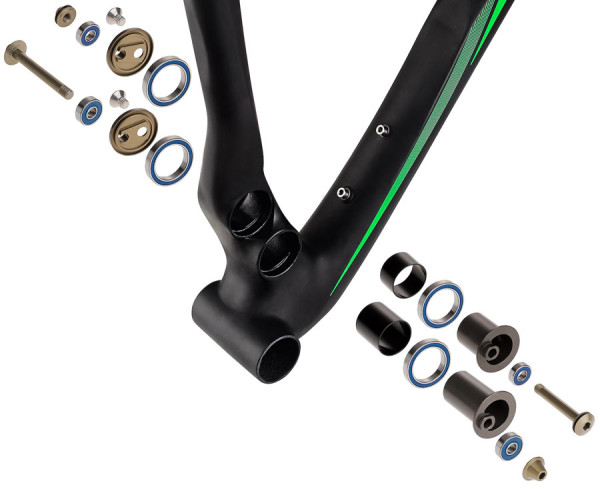
BIKERUMOR: And that bike (Ripley) took a record amount of time to actually come to market, going through three or four complete overhauls and redesigns as trends changed during its development! But with the Mojo, it was already using your dw-link, so how did you improve upon it for the new model?
WEAGLE: Every iteration builds on the last. For the Mojo HD3, it wasn’t Ibis coming to me dictating what they wanted to improve. Rather, I looked at it and said ‘Here’s what I think we can do better.’
It wasn’t hard to make it better. After all, I’d made several iterative steps in the dw-link design since the first Mojo was introduced somewhere around 2006. And you could even think of the original Mojo HD as a second or third generation product since it built on what I’d done before with other bikes. They pretty much gave me carte blanche given my track record.
So, for this one, I looked at today’s riders. Riders are putting so much more energy into the bikes on every day rides today, so the bike has to be able to handle that. And drivetrains have changed, with almost everyone riding 1x groups now, so the suspension could be optimized around that. We still make it work with a double up front because there are those extreme use cases, but for most people why would you ever put a front derailleur on there?!?
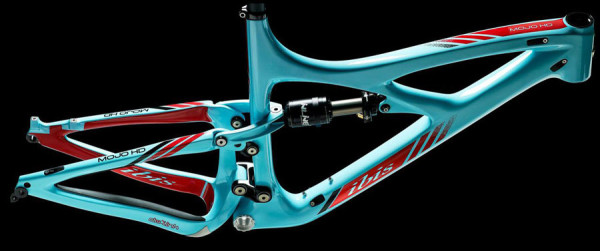
BIKERUMOR: OK, so what in particular is better about this latest version of dw-link?
WEAGLE: Hmmm…How can I answer this without telling the competition how to make their products better? (laughs all around).
To get specific: Some of the major improvements go around the interplay between different dynamic suspension characteristics that you feel simultaneously. It’s how things work together while your pedaling or braking and hitting bumps, because none of that stuff happens separately. These are things that every rider on every bike feels, but would be nearly impossible to isolate without expert analysis. Using all the data at my disposal, I could find refinements that reward the way riders are using product today. Not only are they global system improvements but real improvements for the rider, things that you can feel and use on the trail. Let’s face it, everyone likes more traction.
BIKERUMOR: And it’s continually iterating…you’re already working on tweaks for other customers. You were out testing bikes with another brand last week when we first spoke.
WEAGLE: Yup, rider testing is a huge part of product evaluation and refinement, and an area where I have a great deal of experience. It’s a critical step in making each product the best that it can be, but that’s not to say one brand’s bike is better than the other, it’s about refinement. That could mean optimizing the system as a whole, or to make it work in a special way for my licensee’s goals for a particular model. That way there are dw-links, Split Pivots, or Deltas to fit every type of rider’s styles and preferences. It’s nice to be able to cater to such a wide cross section because it only makes the riding experience better for more people.
BIKERUMOR: And for Split Pivot?
WEAGLE: I’m always thinking about continuous improvement, and Split Pivot is its own company, with its own technology used on different products and licensed by different brands. In terms of partners, one of the things that I’ve really enjoyed is some additional consulting work done with Devinci to develop Stevie’s World Cup race bikes. That work is something that you’ll probably never see on a production bike, but it’s a heck of an opportunity! It’s so much fun working on bikes for that level of riding!
BIKERUMOR: What’s next?
WEAGLE: I’ve been working on a couple of really exciting new things, but what’s next is something that’s been in the design process for some time now. Orion is a 4 bar linkage design that’s enjoyed patent coverage for a while now but that I haven’t offered in mountain bikes. I originally developed it for motorcycles and didn’t really want to license it in cycling to keep my options open in the motorcycle industry. I felt like Orion was close to moto implementation a couple times, but projects stalled, as is the case sometimes with such radical innovations in companies who are established players in longstanding industries. The Orion design does some impressive things with a single front sprocket drivetrain (chainring in bike terms), and with the prevalence of 1x drivetrains in mountain bikes now, the time may be right for a roll out in the mountain bike market. I can’t talk about the timing or potential licensing partners quite yet, but it’s definitely something that I’m evaluating and talking with people about.
BIKERUMOR: Exciting! So, what really motivates you to get out there and create new designs?
WEAGLE: To me, suspension is at its best when it’s most transparent. When you don’t have to flip a lever. Or it’s not throwing you off a line, or bottoming out, or anything else stupid that’s avoidable. When you can make a climb or a tricky off camber that has stymied you in the past, that’s where it gets good.
Ultimately, I love that I can use physics to improve a sport that I love. I love that I can put my mind to helping people to be out there having fun and being healthy. That’s the goal here. So every new version has to be better than the last, to improve the experience for the rider, myself included.
